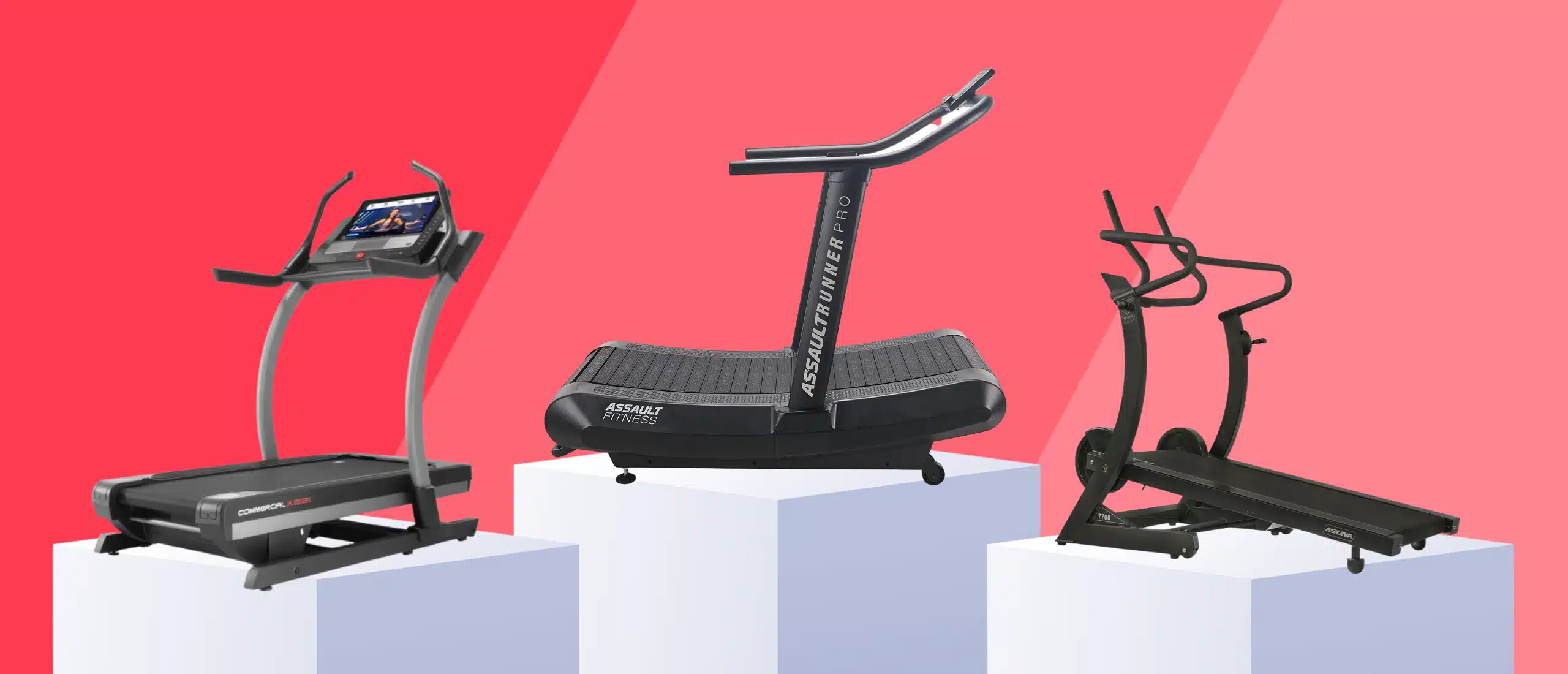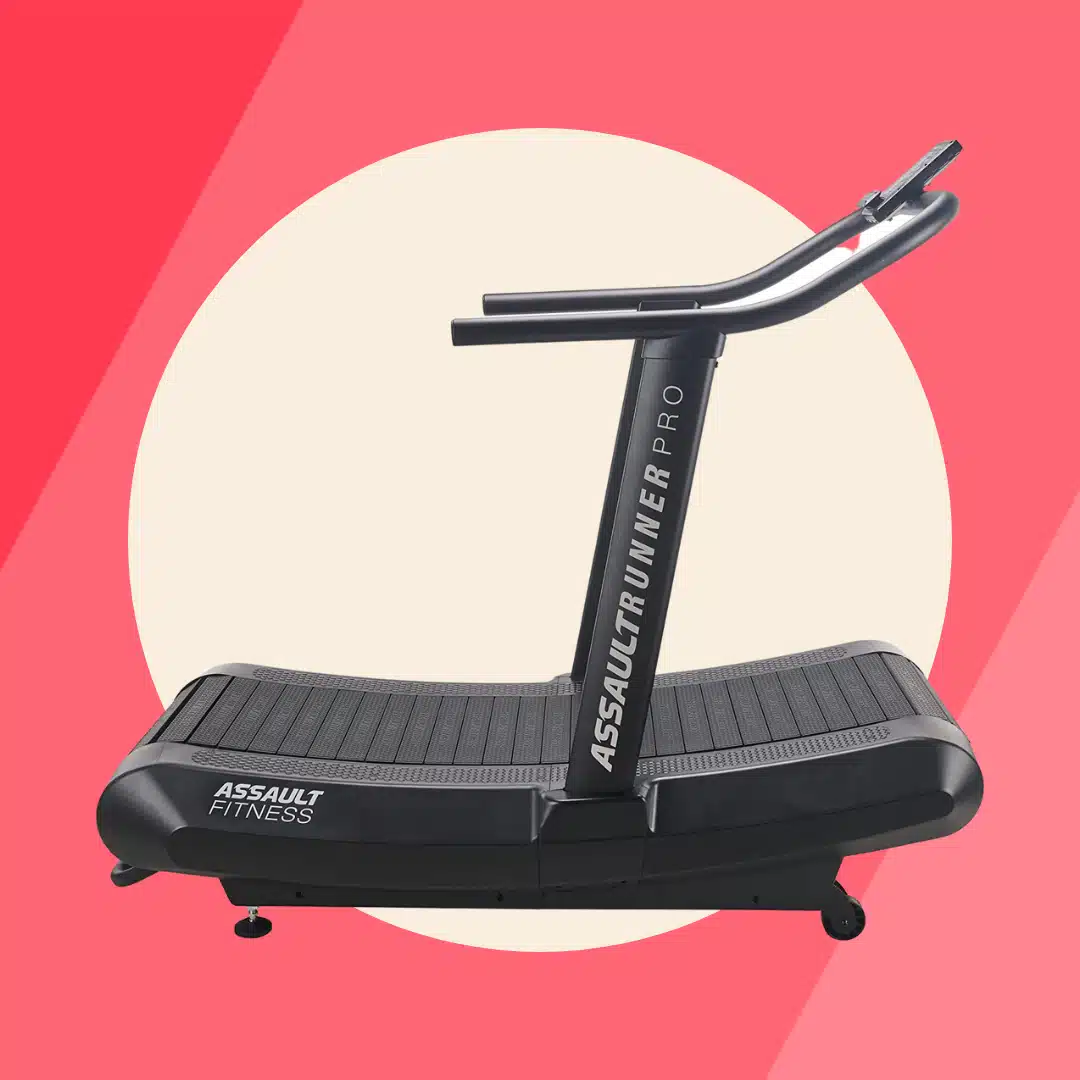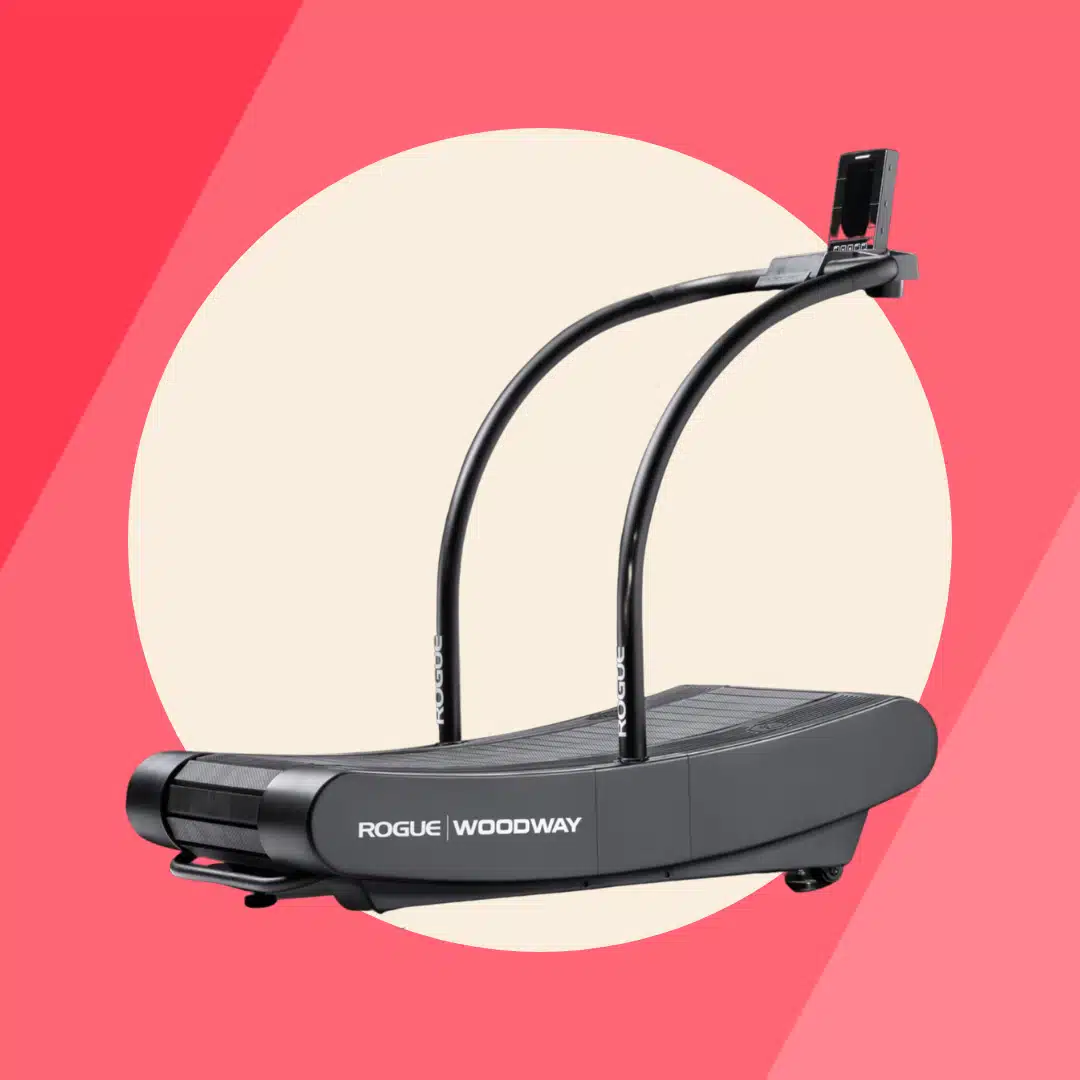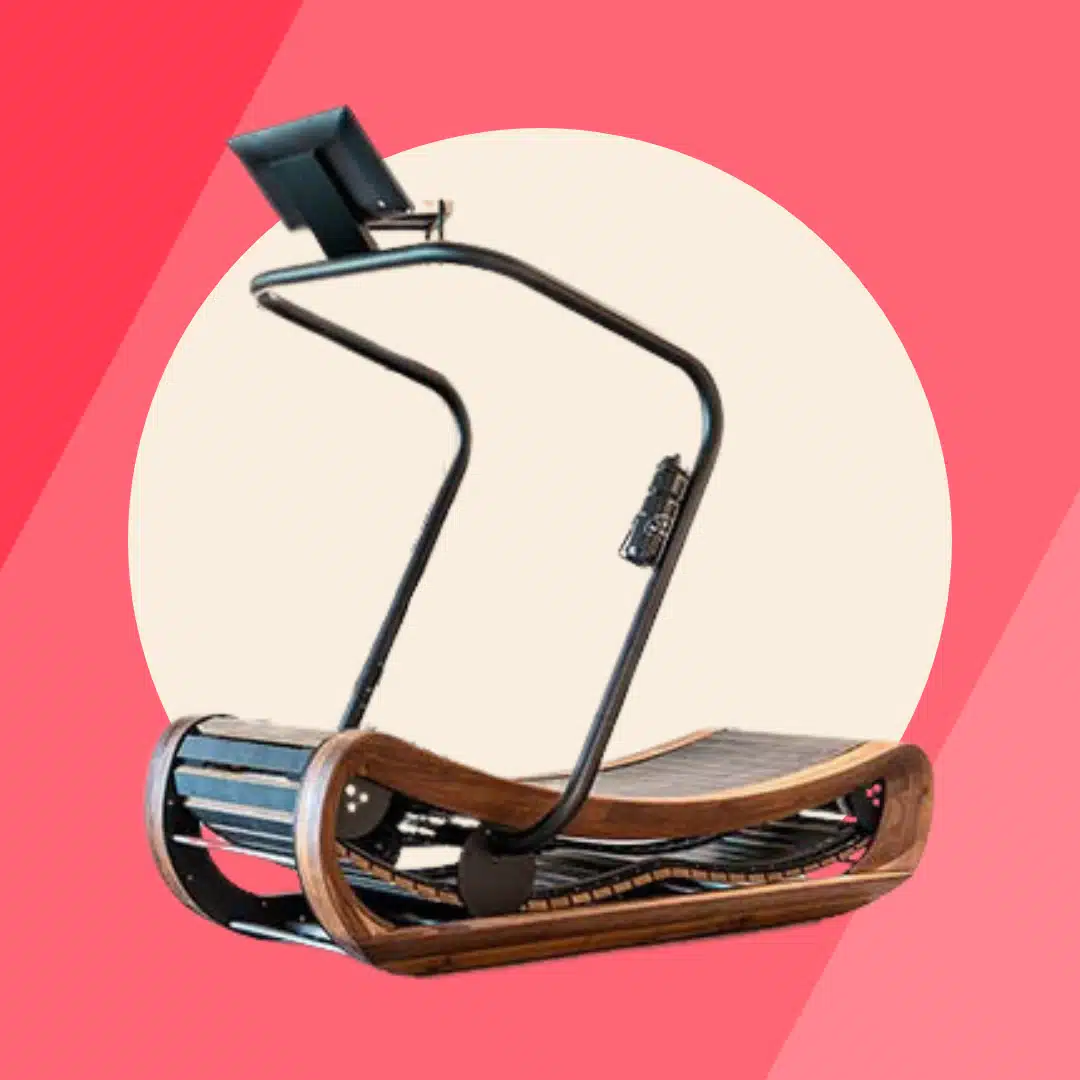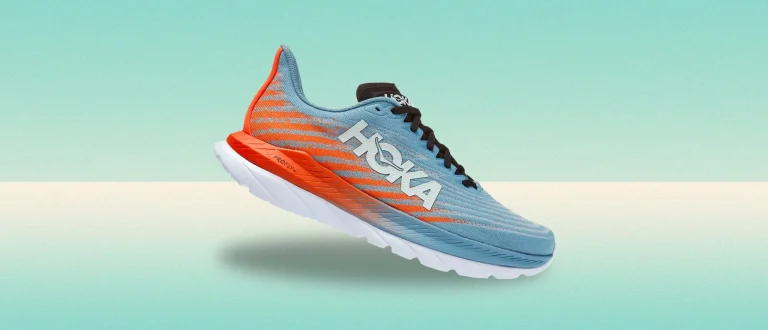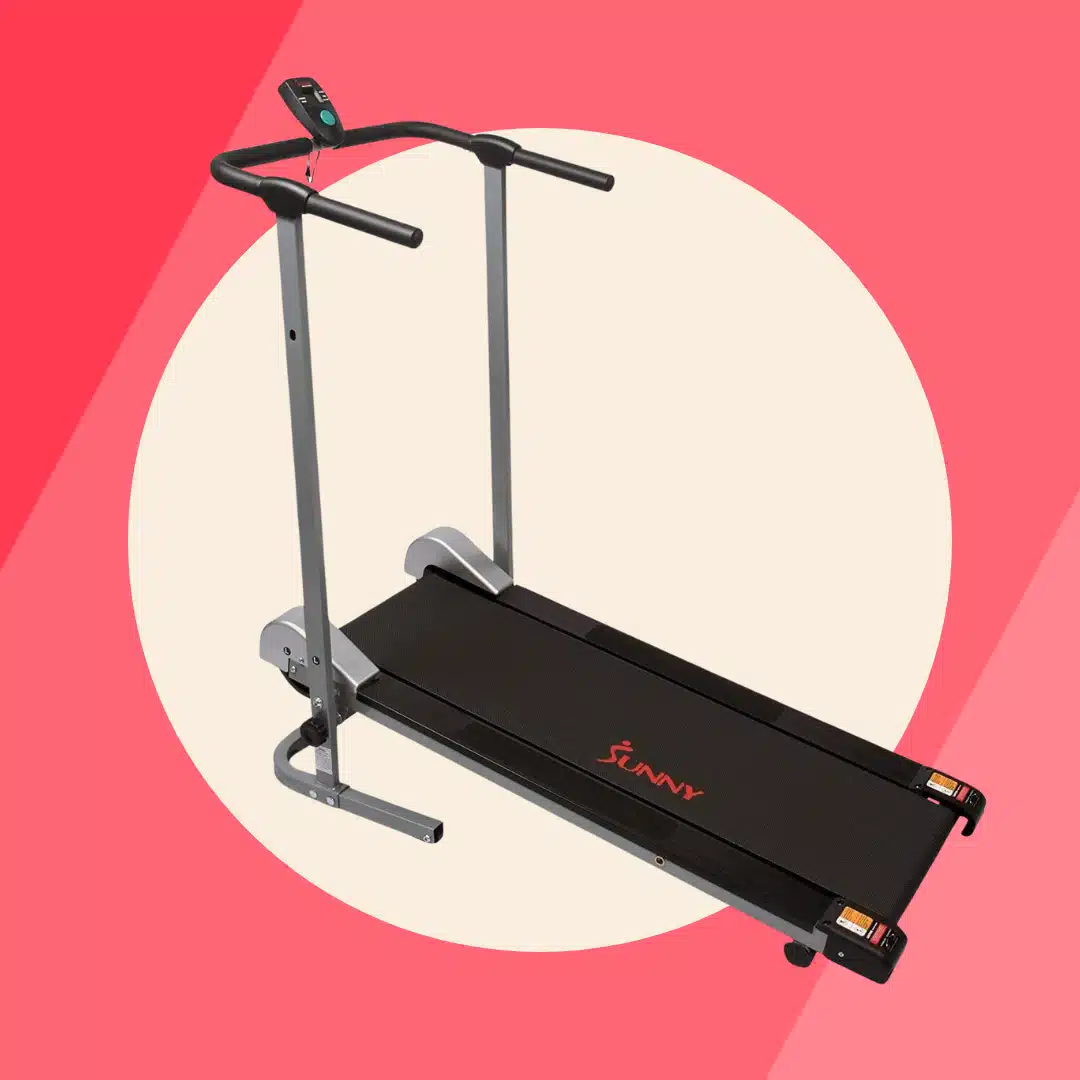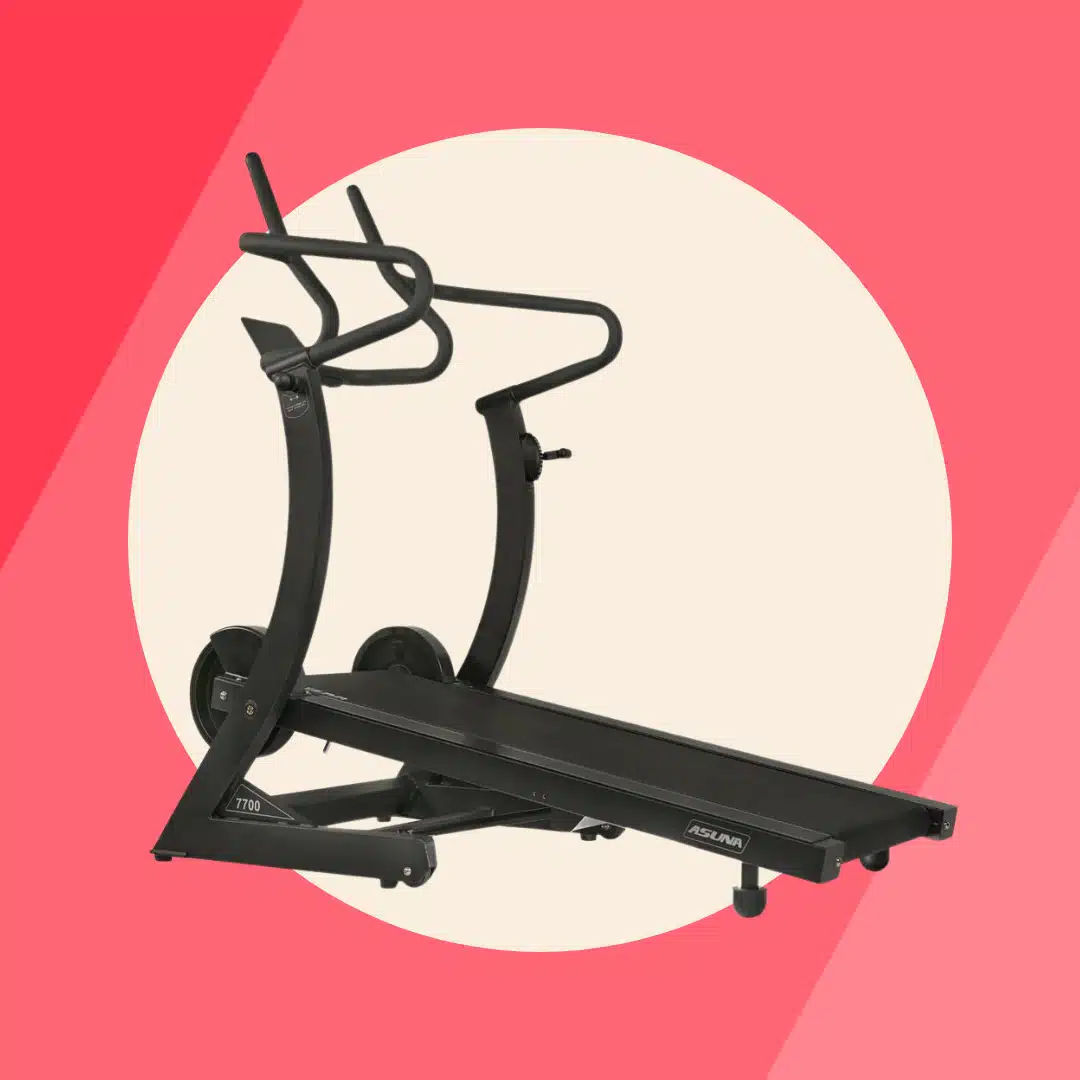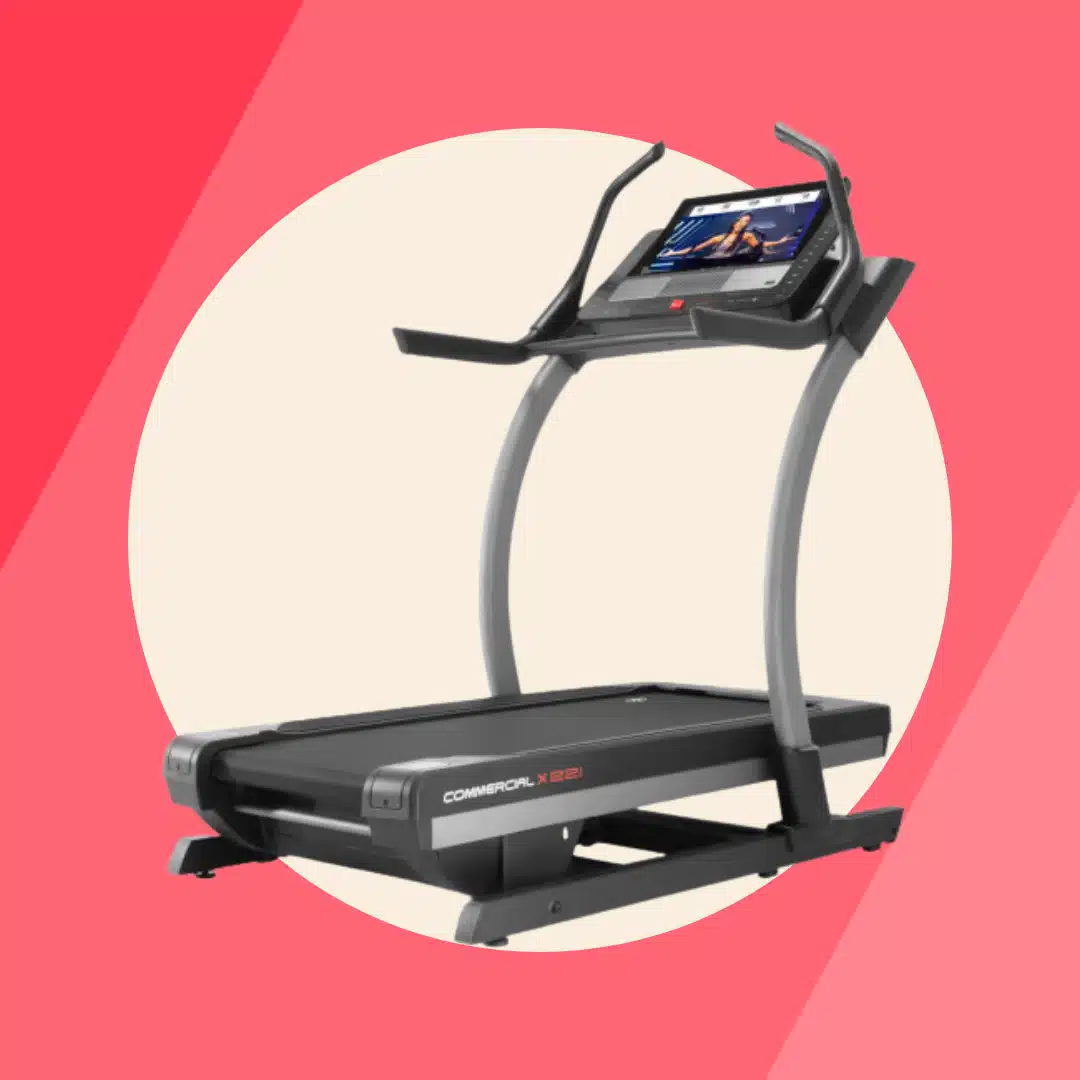Our product recommendations are selected by editors, tested first-hand, or expert-approved. We may earn a commission through links on our site.
When it comes to cardio, our list of excuses is long. Too hot outside? Looks like we can’t go for that run, after all. Getting dark after work earlier (or worse, before 5pm hits)? Scratch the post-dinner walk. And, anything below 60 degrees? Forget about it. However, there is a cure for your most obscene excuses: a home gym. If you’re thinking the last thing you need is a glorified coat rack, hear us out.
The right cardio machine can boost functional fitness while notching up your daily step count and VO2 max—improvements that add up to a longer, healthier life. A classic motorized treadmill seems like the obvious choice to get the job done. But before you pull the trigger, consider its often-overlooked cousin: the manual treadmill.
Manual treadmills present some unique benefits that might provide an even better workout than the motorized alternative. They burn approximately 30 percent more calories than a motorized treadmill (1), skyrocket the intensity of any sprint session, and react quickly to changes in pace—making them the perfect candidate whether you’re chasing endorphins or rehabbing an injury. Here’s everything you need to know.
What is a Manual Treadmill?
A manual treadmill is a motorless treadmill that requires your effort to move the belt. The belt of a manual treadmill won’t move unless you do. Meaning, rather than simply moving your body forward, your muscles and heart have to put in the extra work to keep the belt moving, too.
How to Choose the Right Manual Treadmill
Since manual treadmills naturally elevate the intensity of any workout, they’re a great option for both walking and running. That said, most options specifically cater to one or the other. Here’s what to look for.
For walking
Most walking manual treadmills are more compact, featuring a smaller, flat deck and shorter handrails. If you have a longer stride or just enjoy a little wiggle room, you’ll want to keep an eye on the dimensions. It’s also important to note, many walking models don’t support speeds beyond a brisk walk. So, if you plan to build up to running, you’ll want to look for an option built for higher speeds from the jump.
For sprints and HIIT
Manual treadmills designed for running typically have a larger deck to accommodate longer strides. You also have your pick of a flat or curved deck. Models with a curved deck are ideal for sprints and are praised in the running community for their ability to reduce impact and last forever. Flat options, on the other hand, are preferred for a combo of walking and running and make a better proxy for sled pushes.
For long-distance running
It’s important to note if you’re interested in logging big miles, a manual treadmill isn’t your best bet. That said, if you have your heart set on both, a hybrid model—like the NordicTrack x22i—is a solid choice. Hybrid treadmills have the option to switch between motorized and manual modes for a workout experience customizable to your current mood or goals. To be clear: contrary to popular belief, most motorized treadmills are not hybrid. Attempting to use a standard motorized treadmill with the motor turned off can damage the motor.
The Best Manual Treadmills
Manual treadmills for running
Ready to push your limits? These manual treadmills designed specifically with curved tread decks and slatted running belts are a runner’s dream.
AssaultRunner Pro
When pros like celebrity trainer Gunnar Petersen look to deck out their gyms, they turn to AssaultRunner Pro for a reason. If we could guess why, it’s that this cushy tread has all the features that matter and none of the ones that don’t. The solid steel frame and classic curved design can handle whatever speed you can throw down (up to a whopping 20 miles per hour). And the slatted tread belt won’t only make your stride feel silky smooth, it’s guaranteed to handle up to 150,000 miles. It tracks your stats like time, calories, distance, speed, watts, pace, and heart rate, and offers Bluetooth and ANT+ connectivity if you’re looking to connect to apps like Zwift. At $2,999 the Assault Runner Pro ain’t cheap.
That said, according to many reviewers it’s “worth the investment.”
Specs:
- Dimensions: 70”L x 33”W x 64”H
- Weight: 280 pounds
- Max User Weight: 350 pounds
- Max Speed: 20 miles per hour
- Key Features: Bluetooth and ANT+ compatible, relatively affordable for a slatted treadmill
Rogue | Woodway Curve LTG Treadmill
With its ergonomic curved deck and low-impact slatted belt, this Rogue/Woodway mashup is a great choice for knocking out tough running workouts. Woodway claims that the Curve LTG’s design puts less stress on muscles, joints, and tendons—a feature that goes the distance for runners prone to repetitive stress injuries.
The screen display on the LTG tracks the essentials: speed, time, calories, and watts, along with the option to sync up a Bluetooth or ANT+ compatible heart rate sensor to track your heart rate. At a glance, the LTG is near identical to the AssaultRunner Pro; but, keep in mind, Woodway literally invented (and patented) the slat treadmill belt. If you’ve ever gotten the chance to try one in a gym, you know why they’re slated as number one in the game.
Specs:
- Dimensions: 67”L x 34”W x 70”H
- Weight: 297 pounds
- Max User Weight: 350 pounds
- Max Speed: Unlimited
- Key Features: Bluetooth and ANT+ compatible, widely known as the best-slatted treadmill money can buy
Nohrd Sprintbok Curved Manual Treadmill
Here’s the thing, the Nohrd Sprintbok tread is by far the most expensive on the list, but sometimes you just *need* your fitness equipment to be extra. And if that so happens to be a manual treadmill, the Nohrd Sprintbok is the only clear option.
Its wooden frame (choose from a range of oak to walnut) not only looks like a piece of art, it reduces vibration while the machine is in use. The slatted belt is crafted with wood finished with linoleum, chosen for both its natural and durable properties. And in the way of luxury, the Sprintbok goes above and beyond with a large touchscreen that shows off your stats and includes a wide array of pre-programmed running workouts and scenic runs.
Specs:
- Dimensions: 71”L x 28”W x 55”H
- Weight: 353 pounds
- Max User Weight: 353 pounds
- Max Speed: Unlimited
- Key Features: 17.3” touchscreen included, crafted with primarily wood
RUN FASTER
Manual treadmills for walking
If you plan to use your manual treadmill for walking, you’re better off opting for a flat treadmill belt. Bonus: they tend to be way more affordable than treadmills offering cushy curved decks.
Sunny Health & Fitness Manual Walking Treadmill
If you’d categorize yourself as more of a casual stroller than a runner, this reliable and minimalist manual treadmill from Sunny Health & Fitness is a great bet for low-intensity, low-impact workouts. It offers a compact design that folds down and can be stored out of the way in smaller apartments or tight spaces. And for less than $200, you’re looking at a steal.
That said, if you do want the option to walk and run on your manual treadmill, this one isn’t it. While the treadmill doesn’t list a maximum speed, its small size will keep you from opening up your stride into a full run. While many walking manual treadmills bluntly look small and flimsy, this one is backed up by thousands of positive reviews.
Specs:
- Dimensions: 49”L x 23”W x 50”H
- Weight: 47 pounds
- Max User Weight: 220 pounds
- Max Speed: Handles brisk walks only
- Key Features: Compact size, folds vertically when not in use, digital monitor with simple workout metrics, the highest-rated walking manual treadmill on Amazon
Sunny Health & Fitness Asuna Manual Treadmill
With its sturdier design and flat and spacious tread deck, the Sunny Health & Fitness Asuna offers the flexibility to accommodate walks and runs. At a fraction of the cost of motorized hybrid treadmills, we couldn’t find another option that comparably handles a full range of workouts at this price point.
We’re also semi-obsessed with the fact that you can adjust the resistance or incline, boosting the challenge on your muscles and cardiovascular system with the simple turn of a knob. The set incline and high weight capacity also make this manual treadmill a great option when training for rucking or hiking indoors.
Specs:
- Dimensions: 55”L x 30.5”W x 57”H
- Weight: 165 pounds
- Max User Weight: 440 pounds
- Max Speed: Unlimited
- Key Features: Adjustable resistance (8 levels), adjustable incline (4 levels), folds vertically when not in use, best for walking and running
TRAIN SMARTER
Manual treadmills for a hybrid experience
Maybe you don’t want to be put in a box. You want to walk and run, and the option to use your treadmill motorized or in manual mode. You, my friend, are looking for a hybrid treadmill.
NordicTrack x22i
You want a versatile experience, and the NordicTrack x22i delivers. This unique hybrid treadmill can operate as a standard motorized treadmill when plugged in, but can also switch into manual mode to spice things up. And, with severe incline settings ranging from negative six percent all the way up to 40 percent, trust us when we say things get spicy real fast. NordicTrack kicks workouts up a notch with integrated sled push grips, as well as a horizontal push bar along the base of the console designed for parachute training.
One downside is that you can only use manual mode at one mile per hour, which is great for low-speed resistance work, but not so great for sprints. NordicTrack makes up for it with a 22-inch smart HD touchscreen display. Try not to get addicted to the onboard iFit classes, we dare you.
Specs:
- Dimensions: 70”L x 39”W x 72.5”H
- Weight: 417 pounds
- Max User Weight: 300 pounds
- Max Speed: 12 miles per hour in motorized mode, 1 mile per hour in manual mode
- Key Features: Adjustable incline and decline (-6 to 40 percent), manual and motorized modes, equipped with sled push grips and a horizontal push bar, 22” smart touchscreen included, compatible with iFit
The Benefits of Manual Treadmills
As manual treadmills ramp up the intensity of any walk or run, they notch up the benefits, too. Here’s what to expect.
Burn more calories
One study suggests that when moving at the exact same speed, you burn approximately 30 percent more calories per minute on a manual treadmill than on a motorized one (1). Your muscles, and thus your heart, work harder to provide the necessary power to manually move the belt.
Activate more muscles
Because manual treadmills involve pushing against the resistance of the belt to keep things moving, they fire up your muscles more than a motorized treadmill. The muscles of your lower body—including your glutes, hamstrings, quads, calves, and intrinsic muscles of your ankles and feet—take on the brunt of the work. Meanwhile, your core steps in to counter the additional force, keeping you stable with each step.
Increase aerobic capacity
The more muscles you activate, the harder your heart has to work to deliver fresh blood and oxygen and clear waste like lactic acid. Even at slower speeds, working out on a manual treadmill jacks up your heart rate, pushing you into higher-intensity zones. By working harder, you can expect to boost your VO2 max—widely known as the best indicator of cardiovascular endurance and aerobic performance.
Promote good form
One of the most common running mistakes is overstriding—or kicking your foot too far out in front of you, striking with your heel, and pulling your body forward. A manual treadmill naturally corrects this problem, since the only way you’ll generate enough power to keep the belt moving is by striking with your midfoot directly below your hips and pushing your body forward. This, in turn, shortens your stride, increases your cadence, and fires up the powerful muscles of your posterior chain (most importantly, your glutes)—the trifecta of running efficiency.
Rehab injuries
Since manual treadmills only move when you do, they’re a safer option for beginners, seniors, or those currently rehabilitating an injury. When you slow down or stop, so does the belt. Plus, they come equipped with handrails that allow you to push harder when you feel like it or pull back when you’re feeling unsteady.
Manual Treadmill FAQs
You’ve got questions about manual treadmills, we’ve got answers.
Are manual treadmills better than motorized treadmills?
It depends. Manual treadmills can help build muscle and burn more calories than a motorized treadmill. They’re also great for walking and sprinting, but not the best for mid- to long-distance running since you have to keep the belt moving with your own power. Motorized treadmills, on the other hand, tend to have more incline and speed options, and are better for set-it-and-forget-it workouts—like zone 2 training.
Is it hard to walk on a manual treadmill?
It’s harder to walk on a manual treadmill than on a motorized one because all of the power required to propel the running belt forward is generated by your own muscles. That said, it shouldn’t be so hard that you can’t move the belt forward. When shopping for a manual treadmill for walking, look for options with built-in or adjustable incline, and adjustable resistance settings—these features make it easier to keep the belt moving at a decent speed.
Are manual treadmills quiet?
Generally, yes. Manual treadmills are much quieter than motorized treadmills since you avoid the typical noise of a running motor. However, if you’re sprinting, the treadmill will make some noise based on how loud and heavy your steps are.

